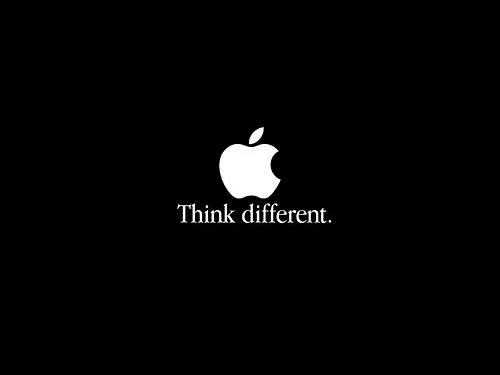If you employ Content Marketing in your business strategy, you already know that several issues influence your efforts’ outcome.
Creating high-quality content that answers the buyer persona’s questions — and is optimized for search engines — is one of the most critical and widespread factors.
However, have you ever stopped to evaluate your content consistency and even its coherence in your brand communication?
In a robust content strategy, which includes several publications per month, all your materials must be speaking in the same tone of voice, following the same standards.
To understand more about these issues and offer a memorable experience to your audience, continue reading!
- The importance of consistent communication
- The 3 pillars of consistent communication
- Closing Remarks
The importance of consistent communication
We live in the era of Consumer 4.0. Before closing any deal, this kind of customer seeks information about the product/service and the company. They are also known for buying with purpose and demanding to be assisted in various channels.
Imagine that this consumer Googles the benefits of Inbound Marketing. Then, they find a text from Rock Content written by a certain author, which guarantees that an inbound strategy will bring many benefits to their business.
Within this text, however, is a link to another post by another author. There, the second author states that Inbound Marketing does not have so many benefits, and investing in Outbound is safer.
So, which information can the client trust? Does Inbound have benefits or not?
This kind of inconsistency takes away your brand’s credibility. Something that, in many cases, companies spend years striving to build.
And if your audience doesn’t believe in what you say, it’s unlikely that your domain will reach the top positions in Google.
Authority in the digital world is like a ladder, which brands climb rung by rung. Clear, informative texts, free of contradictions, help in this process. And consistency in communication certainly helps as well.
You need to ensure that all authors follow the same reasoning line when writing for your company’s blog. The tone of voice, the mindset, and the intent also need to be the same.
As much as each author has their nuances and their own style, the difference between the blog’s different materials cannot be striking. We cannot have someone who writes following MLA norms, while others value scannability.
Details such as the site’s writing guide also need to be taken into consideration. After all, there is nothing worse than being distracted by inconsistencies while reading a piece of content.
The 3 pillars of consistent communication
Some elements are essential for consistent communication, and now we will explain each of them in detail!
- Brand persona
- Tone of voice
- Style Guide
Brand persona
The idea of a brand persona is precisely to center the interaction between brand and public on a character.
You can create a brand persona from scratch, considering your company’s culture pillars, or you can mirror an existing person.
For example, if you have a brand of women’s goods, you can take inspiration from the actress and activist Emma Watson. From her speeches, you can outline points that your brand will always cherish while communicating with the public:
- avoid any gender bias;
- emphasize women’s autonomy and capacity;
- empower women through your products.
You can rely on concepts and even on your brand’s strategic narrative. The idea here is to consistently reinforce the same speech until it becomes your company’s personality.
When you see the phrase “Think Different”, you probably remember Apple, right?
The big tech company’s idea is, precisely, to think differently. Seeing its models and releases, we realize how Apple has revolutionized the market with its iPods and iPhones.

The way this communication will be carried out depends on the tone of voice taken. And this is what we will discuss next.
Tone of voice
The tone of voice of a brand is the way it speaks to its audience. Through this tone, the brand can convey its missions, values, and goals to the audience.
It will also help your brand’s awareness and authority.
Your tone of voice can be more formal or informal, according to the characteristics of your persona. Of course, regardless of this choice, you need to adapt the language to the medium in which the message is circulating.
You can also opt for a language closer to the reader, or for one that is more distant.
Here at Rock, our tone of voice is exposed to everyone in the company, in our brand identity guidelines:
- informal: but without losing authority;
- fun: but without losing objectivity, seriousness, and professionalism;
- didactic: we love to teach! Rock Content was created based on the values of learning and teaching — and our speech shows that;
- confidant: but without being arrogant;
- friendly: but without exceeding common sense;
- provocative: aiming to push our readers to take the next step;
- clear as water (David Allen would be proud!): we value simplicity and clarity in our communication;
- flexible: Rock Content adapts every day. That way, we can understand what success means to each of our rockers, clients, readers, and freelancers — and we can help them get there;
- humanized: although we are a technology company, it’s people that matter. That’s why we aim to maintain a natural language in the way we communicate, adopting a person-to-person, rather than company-to-customer, approach.
One brand that shines in defining its tone of voice is Netflix. Authentic, funny, young, close to readers, up-to-date with internet trends: this is how the streaming service relates to the public — especially on social media.

This proximity generates buzz and engagement. Often, responses to public comments go viral and delight users.
As you can see, several points define what the brand’s voice sounds like. And, if this information is not made clear and exposed to the entire company — and content producers — it will hardly be remembered.
So we come to our last point: the style guide.
Style Guide
You need a style guide for your brand.
It doesn’t matter how your content production works. In any format or structure, a style guide is extremely necessary.
If you are the only person responsible for producing articles, rich materials, social media posts, emails, you need to document what you do. Although this is your role, everyone in the company needs to understand how it is done.
I usually justify all documentation with the following sentence: if I disappear from the world, tomorrow someone needs to be able to replace me to the point that no reader notices my disappearance.
If you work in a content team or outsource content production, the style guide becomes even more mandatory.
In fact, your readers cannot notice an inconsistency because the person who produced it was X or Y person.
Of course, each of us has our own writing style, and the intention of the guide is not to cut off everyone’s individual creativity. But rather to make sure that the message, for the reader, is always the same.
Moreover, it optimizes time. If everyone knows how to produce each type of content, the likelihood of rework is lower.
You can also guide your blog’s preferred link building strategy, ensuring that the texts already come with the necessary optimization.
What your style guide should contain
Your style guide should have everything the copywriter/reviewer needs to produce high-quality texts.
For example, in our style guide, we explain the link hierarchy we use in the blog, our scannability rules, the type of content we will produce, and our writing manual.
This way, a freelancer who will produce content for Rock’s blog knows that we use the first person plural, that texts are left-aligned, paragraphs are short, foreign words are not highlighted.
Besides that, we have a spreadsheet with our main keywords and the articles that should be linked to them.
After all, in a blog that has been around for more than 6 years, we cannot expect everyone to know which text to link to for “Content Marketing”.
This is actually one of the most critical parts of our document. A large part of an SEO strategy is based on link building.
If each of our content producers chose a blog text with the keyword “Content Marketing”, we would never be able to rank the same text — as the link strength would be split.
How to make your style guide
The easiest way is to complete our assessment at the end of this article. It will generate a template similar to what our marketing team uses to produce our own style guides.
You will just need to answer the questions we have posed, save the document, and pass it on to the rest of your team.
However, if you want to start from scratch, think about points such as:
- What is the tone of voice of your brand?
- Should the texts be in the first or third person? Singular or plural?
- Who is your buyer persona?
- What are the most important links in your blog?
- Which text from your blog do you like the most? (Choose material that will guide your following productions)
- Should important passages be highlighted in bold?
- Should foreign words be highlighted?
- What CTAs do you use in your content (link to other articles, follow on social networks, leave a comment, download a material)?
- What is your writing standardization? (If you are health-related, do you call your audience “customers” or “patients”, “e-commerce” or “ecommerce”?)
Just as important as the process of producing the content is reviewing and optimizing it before posting.
It is necessary that the reviewers, or editors of the blog, are on the same page about this as well.
Consistency of content is essential for building your brand’s authority, especially in the digital world.
Google SERPS are increasingly disputed, and our Content Marketing strategy has to be precise.
If you want to scale your content production without jeopardizing its quality and consistency, answer our assessment and create your own content style guide!
Closing Remarks
Content consistency is a crucial aspect of a successful content marketing strategy. Maintaining a unified tone of voice, adhering to a brand persona, and following a style guide are key pillars of consistent communication.
Inconsistencies in content can undermine your brand’s credibility and hinder its ability to reach the top positions in search engine results.
To ensure content consistency and elevate your brand’s authority, WriterAccess offers a solution. Our platform connects you with top writers who understand the importance of maintaining a consistent communication approach.
By leveraging their expertise, you can create high-quality, coherent content that resonates with your audience. Try WriterAccess for free and unlock the potential of content that drives results.








